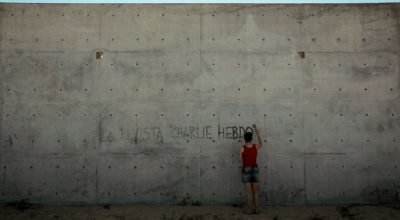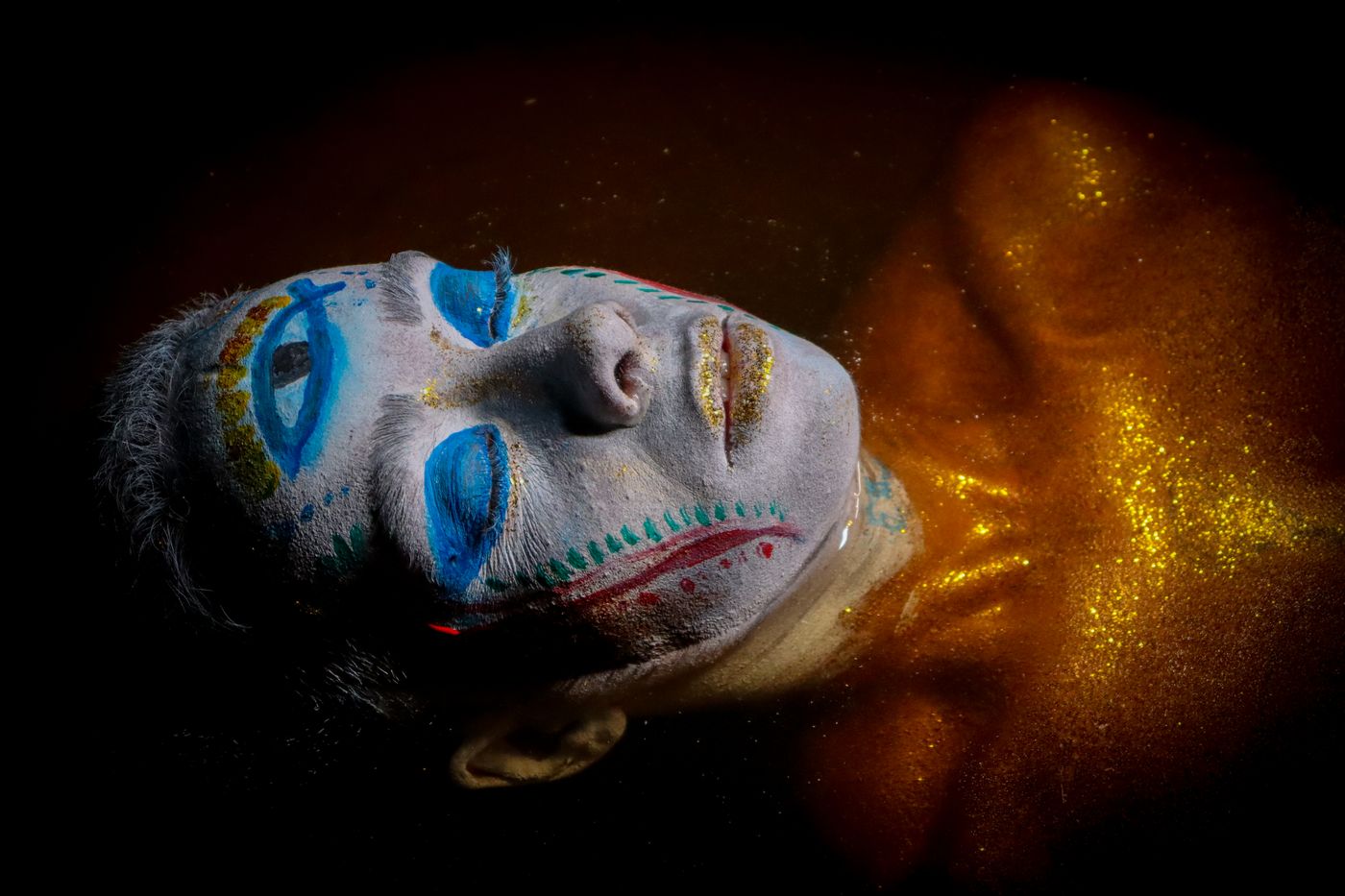
AIDS IS A SOCIAL EPIDEMIC! INTERVIEW WITH LILI NASCIMIENTO AND HIURA FERNANDES
On this December 1st, International AIDS Day, Artishock is pleased to once again collaborate with Day With(out) Art 2023, an initiative carried out since 1989 by Visual AIDS, a New York-based non-profit organization convinced of the power of art to address HIV/AIDS.
This year, we join the event by presenting the story behind the short film Aquela criança com AID$ (That child with $IDA) and its creators, Hiura Fernandes and Lili Nascimento (Brazil), which is part of the programming of Everyone I Know Is Sick, a cycle of five videos commissioned by Visual Aids to make connections between HIV and other forms of illness and disability.
Inspired by a statement by Cyrée Jarelle Johnson in the book Black Futures, the program explores how our society excludes disabled and sick people by defending a false dichotomy between health and illness.
Inviting us to understand disability as a common experience rather than an exception to the norm, the video series highlights a variety of experiences spanning HIV, COVID, mental health and aging.
The program includes the premiere of four other commissioned works by Dorothy Cheung (Hong Kong), Beau Gomez (Canada/Philippines), Dolissa Medina & Ananias P. Soria (USA), and Kurt Weston (USA), who emphasize the knowledge and experience of disabled and ill people in a world still facing multiple ongoing pandemics.
That Child with AIDS, the first Brazilian short film to showcase the complexities of living with HIV/AIDS, tells the story of Brazilian activist and artist Lili Nascimento, who was born with HIV in 1990. Lili has worked hard to broaden narratives about the experience of living with HIV, transcending the limited images and ideologies that often characterize the AIDS industry.
Lili Nascimento (he/they) is a transpersonal psychologist, columnist and artist who studies and works with children living with HIV/AIDS in Brazil. Their approach, situated at the intersection of art and clinics, seeks to bring about poetic and political possibilities of existence.
Hiura Fernandes (she/her) is a multidisciplinary artist, cultural producer and designer based in João Pessoa, Brazil. Her audiovisual and performative work seeks to merge the body with cinematic practices and to explore original ways of communication through the body and ancestry as pathways to healing and embodied experience.
As a black travesti, she experiments and addresses the stereotypes of counter-hegemonic experiences in her body and her work, seeking to understand bodily expressions as a power capable of generating love, fear, anguish and hate.
J Triangular, coordinator of Visual Aids’ Day Without Art screenings for Asia and Latin America, interviews them.
Translation by Betina Ticoulat

I would like to begin this interview by asking how you both started your activism. Lili, do you connect your transpersonal psychology practice with your activism? Hiura, how do you relate body experimentation to your activism?
Lili: I was born in 1990 and was already born with AIDS. The diagnosis of my parents, both HIV positive, shattered the image of the social epidemic perpetuated by the mainstream media. The so-called disease of foreigners and gays was now present in the peaceful Christian family in the outskirts of São Paulo. Besides having to learn to manage the technical aspects of HIV, the exhausting routine of hospitals, complex medications, and opportunistic infections (infections occurring during immunosuppression), my family and I had lost the possibility of handling health care solely within the private sphere of our home. We were exposed to the curious gazes of the neighborhood and the discursive framework of the social epidemic, whose statements did not align with our reality.
I traversed my childhood attending health institutions, a constant for individuals born with HIV. Until the 2000s, pediatric antiretroviral treatment (ART) in Brazil consisted of a medication we nicknamed «GAMA» (gamma-hemoglobin serum), administered once a month, lasting about four hours, and with strong side effects. It was during the administration of GAMA that bonds of friendship were formed, and the possibility of exchange with children who shared the same concerns and anxieties (and seemed to be the only ones who understood us) was established. The difficulty of taking the medication, for example, was a unanimous complaint and also the main reason for complications that led many of my friends to their deaths.
It was this hospital routine and these moments of GAMA that facilitated our political organization. Children and teenagers welcomed in Support Houses and those attending AIDS NGOs usually invited me to participate in their activities and meetings. That’s how, in 2002, I met the Grupo de Incentivo à Vida (GIV) in São Paulo, which organized the weekly meeting «Viver Criança,» a space for socializing and mutual support among children living with HIV. Through the friendships I built in this group, I started attending the Associação de Amparo à Criança e Adolescente com AIDS (AACAA), which had a partnership with the School of Fine Arts in São Paulo. It was my first exposure to visual and plastic arts, and this experience initiated me into HIV/AIDS activism.
In partnership with Pela Vidda from Niterói (RJ) and with funding from UNICEF, GIV organized the 1st National Meeting of Children and Adolescents Living with HIV/AIDS in Brazil, nicknamed «vivendinho» in reference to the national meeting of People Living with HIV/AIDS organized by the Rede Nacional de Pessoas Vivendo com HIV (National Network of People Living with HIV). Bringing together more than 80 children and adolescents and about 20 adults from the social movement, NGOs, and health institutions, this meeting was my first trip outside São Paulo and the opportunity to see the sea for the first time in Rio de Janeiro. This is the most important milestone in the construction of what we now know as the Rede Nacional de Adolescentes e Jovens Vivendo com HIV/AIDS (National Network of Adolescents and Youth Living with HIV/AIDS or RNAJVHA), where I had the opportunity to serve as Secretary of Political Articulation for many years.
In 2009, with the closure of AACAA, we decided to continue meeting weekly. With the support of some nurses from the Instituto de Infectologia Emílio Ribas (IIER), who provided space on the terrace of the IIER Day Hospital, this group later became the Poder Jovem Foundation, the first institution founded and managed by young people living with HIV. With Poder Jovem, I intensified my study and engagement in issues related to vertical transmission of HIV (TVHIV), specifically in children born with HIV/AIDS.
However, it was only in 2012 that I understood myself as an «Activist.» In Brazil, there was a series of reports on something the media called the «club of the stamp,» culminating in a bill to make HIV transmission a heinous crime. I equipped myself to work with the social movement to shelve this law, a historical moment of regression that intensified stigmas and discrimination.
One of the most important milestones in my activist journey occurred in 2016 when, as Vice Coordinator of the State Network of Adolescents and Youth Living with HIV/AIDS in São Paulo (Rede SP+), I played a role in the development of the social control course in the Unified Health System (SUS) for young people living with HIV/AIDS. The course was funded by UNAIDS in partnership with the Ministry of Health and various NGOs in São Paulo. In this course, I met people who became partners and friends. Together with other friends, we founded the collective Loka de Efavirenz.
Loka, as we affectionately call it, arises from our collective need to produce what we term «counter-narratives of AIDS,» reflecting on the intersections of living with HIV/AIDS without falling into the traps of romanticizing this experience, much less reinforcing moral panics. We have invested in disseminating information and reflections on this topic through art and have had important opportunities, such as my presentation of the performance «Estamos falando embaixo d’água,» a collaboration with Hiura Fernandes, at the 22nd International AIDS Conference (IAS) in Amsterdam. It was this experience in the Loka de Efavirenz collective that embraced my pain and outrage and allowed me to organize the hatred I harbored for AIDS: if I survived AIDS, what quality of life do I want to have from now on? In this questioning, we continue to advocate for the right to Well-living for people born with HIV/AIDS.
I have also been involved as a prince in Casa de Acúenda, a ballroom community in Rio Grande do Norte, Brazil. The Ballroom is a space for constructing social technologies, connecting the national and international territories and promoting policies for a dignified life and existence.
Regarding my clinical practice, I do not see it as separate from a political and activist endeavor. As a psychologist,I am committed to a ethical-political project of care that is emancipatory, aligned with my art, vulnerabilities, activism, and, ultimately, my way of being in the world.

Hiura: I was born in 1994, and as a child growing up in the outskirts of Brazil in the 90s, television and mainstream media were always part of our reality, almost like entertainment. However, when it came to HIV, the news was loaded with stigma, prejudice, and markers of discrimination that always echoed in comments about certain populations: trans and travesti individuals, gays, lesbians, and any other forms of existence that deviated from heteronormativity.
Realizing myself throughout this process as an LGBTQIAP+ person growing up in a world where AIDS would be a reality, various curiosities and desires began to emerge.
At the end of my elementary school, at the age of 13, I started organizing some theatrical and artistic production groups at the school, creating poems and music that addressed topics relevant to our realities as adolescents, from our perspective: sexuality, teenage pregnancy, drug use, racism, and other issues that emerged in my productions and those of my peers. At a certain point, the school submitted a project to the Municipal Prefecture of São Sebastião, where I lived at the time on the São Paulo coast. The project aimed to promote training for some young people in various schools so that they could share knowledge on these subjects with their peers. I was selected for this training at the Municipal Infectology Center of São Sebastião (CEMIN) for two years, and then I began to question why this reality persisted for people living with HIV, given that technical management and treatment had supposedly advanced significantly.
At the age of 18, I joined the 3rd class of Biomedicine at the Institute of Biomedical Sciences of the University of São Paulo (ICB-USP). A year earlier, having entered the Faculty of Dentistry of Bauru (FOB-USP), I had started researching the use of certain proteins to block HIV cell division, and I continued this research at ICB.
A year later, I met some people from the AIDS social movement, such as Lili, and we began a process of sharing questions and research about the narratives and biases surrounding the issue of HIV in Brazil. It was in 2016 that we formalized ourselves as a group of artists, activists, and researchers focused on counter-narratives of AIDS, known as Loka de Efavirenz since then.
We then started producing film screenings with discussions, street art, roundtable discussions, readings, articles, and publications in the media. We began to observe that we were gaining relevance in activism by objectively denouncing issues related to positive experiences that were challenging the implementation of national-level public policies at the time. An example is the «PositHIVas Vivas» campaign in 2018 by Loka de Efavirenz, which exposed the dismantling of the Unified Health System that had been strengthened in Brazil until then.
From there, we expanded our understanding of the use of art as a powerful and strategically confrontational language capable of communicating all our issues to burst our bubbles and reach many others.
In the same year, I started my visual research process with photography and managed to publish the essay «Necropolítica da Aid$» in the June edition of HIV Howler Magazine in partnership with Loka de Efavirenz, Lili Nascimento, and other artists. It was through photography that I understood my need to continue a broader research in visual arts, now using performance, language, and audiovisuals to understand the materiality of black cultures in diaspora in urban contexts. As all this materiality process happens from experiences, or as Lili would say: from «experianças,» and therefore from what I go through in this body in the world, my study at the intersection of visual research on the materiality of black cultures and my performance research on anger emerges. Hence, my connection between this black and travesti body and activism in HIV/AIDS was born.

How did you conceive the film «That Child with AID$»? What was the creative process like in bringing it to life?
Lili: At the end of 2019, the Loka de Efavirenz collective was invited by cultural producer Gustavo Bonfliglioli to the launch of the «Amanda Selfie» project in São Paulo. This project originated from the PrEP 1519 research conducted by the Faculty of Medicine at USP, in partnership with UFBA and UFMG. It aimed to integrate research and promote the use of Pre-Exposure Prophylaxis (PrEP) for HIV in gay/bisexual adolescents (cisgender boys and transgender/travesti girls) aged 15 to 19. Amanda Selfie was a chatbot/digital service developed in collaboration with the technology company App Cívico to engage in conversations with LGBTQIA+ youth about sexual health and prevention. It also aimed to recruit eligible teenagers for the PrEP 1519 research and, therefore, for PrEP use. At that time, it became known as «the first transgender robot in Brazil.»
Initially, I found the project brilliant. For Loka, the use of technologies should not serve as a channel for passive information but rather as a constant network of dialogue and active interaction. However, we shared a concern: pediatric treatment has not advanced in technical management as much as adult treatment. There are still no suitable pediatric antiretroviral formulations, and there isn’t a theoretical accumulation of how AIDS epidemics have developed in childhood. Adherence to pediatric clinical treatment remains a significant issue, impacting mortality data due to AIDS in children under five. Faced with all of this, I began to consider how, alongside the implementation of PrEP, we should also look at an issue that seems to have been forgotten in history: how biomedical innovations have been integrated into the lives of children and adolescents living with HIV.
In this scenario, I initiated an artistic research project that involved experimenting with body painting and my adherence to antiretroviral treatment. I drew inspiration from other artists living with HIV, such as Micaela Cyrino and L’Orangelis, who also explore this investigation into temporality and the construction of meanings of aging for people born with HIV. This continuous process of painting my face, washing, painting again – this ephemeral art on my own body – led me to an in-depth study of the Face category in ballroom, where performance incorporates gestures, movements, and poses that highlight the beauty of the face. These two lines of study speak about self-esteem as an ethical possibility of self-care, intersected in art, health, and affection.
However, the structured idea for the short film, with a script and references, only came to life in 2021. In partnership with Oxfam Brasil and the Ballroom Paraíba community, we organized, for the first time, the Day With(out) Art exhibition in northeastern Brazil. The event brought together various figures from the social movement, vogue workshops, and roundtable discussions, concluding with the III edition of the Posithiva Ball in Brazil. During the event feedback, participants expressed a desire for a Brazilian film in Portuguese. Taking this to heart, we made it our purpose to be the first Brazilians to participate in Visual AIDS’ Day With(out) Art program with a film about vertical transmission, and that is an immense feeling.
From these reflections, alongside Hiura Fernandes, also from Loka de Efavirenz, we began building what was only a dream until then: the recording of the first Brazilian short film that presents the complexities of living with HIV/AIDS. «Aquela criança com AiD$» seeks to poetically discuss the phases of life – childhood, adolescence, adulthood, and aging – intersected by the experience of being born with HIV. Through the Visual AIDS program, we had the opportunity to realize this dream, creating the first Brazilian short film to be distributed by Visual AIDS in the Day With(out) Art program.
There is a contemporary thinker named Ailton Krenak who teaches us that a dream is a technology for building futures. «Aquela criança com AiD$» existed first in a dream, nurtured by our ancestors until it became a concrete reality today. And so, we dream of a world without AiD$, not only free from the disease and its harms but primarily in another existence project where we can exist in our pluriversality.
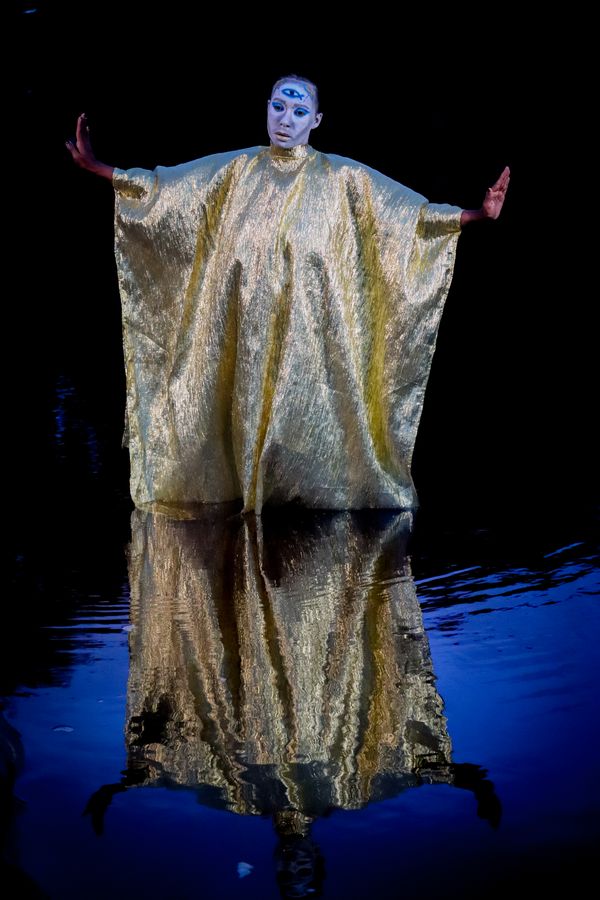
Could you explain the decision to use the symbol ‘$’ in ‘AIDS’ and how this relates in the short film to the criticism of the interests of pharmaceutical multinationals and neoliberal economic policies in the management of HIV/AIDS?
Lili and Hiura: AIDS is a social epidemic! Long before it manifested as a disease, it had already infected our collective imagination with narratives intertwined with a political agenda founded on structural violence (racism, sexism, etc.). We chose to symbolize AIDS with the dollar sign to emphasize how necrocapitalism manipulates and controls health and disease processes, as starkly evident in the case of COVID-19, where impoverished populations in precarious living and working conditions became even more vulnerable to illness. This, coupled with pharmaceutical interests that regulate prices and patents.
Rendering AIDS with the dollar sign serves as a denouncement that the processes leading to death and illness are arbitrary but not random. When we recognize that one-third of Brazilian travestis live with HIV/AIDS, or when we delve into the prison system and find that the HIV infection rate is 140 times higher than in the rest of the population, or even when we identify that cis black women die three times more than white individuals, particularly due to late diagnosis, we expose an extermination project that began in colonization and intensified in modernity.
Claiming the spelling AiD$ asserts that AIDS is within us—a collective societal ailment—not an affliction of others. Consequently, the responses to it should also be collective. We all live with AiD$.

Have you seen Camila Arce’s visual poem for DWA 2022 about the experience of being born with HIV? The activist and artist, along with other activists and organizations, promoted the Comprehensive Response to HIV Law, which was approved last year in Argentina. What has been happening in Brazil? Is the creation of a similar law possible? What are the main challenges that activists against HIV stigma face in Brazil?
Lili: I became familiar with Camila’s work through Visual AIDS and followed some of her activism while I was involved with ICW Brazil. In Brazil, we have achieved significant historical gains in legislation to combat stigma and discrimination, such as Laws No. 11,199/2002 and No. 12,984/2014, which criminalize discrimination against people living with HIV/AIDS, and Law No. 9,313/1996, which ensures free and universal access to antiretroviral treatment (ART) through the Unified Health System (SUS). However, there is a lack of political interest in developing responses to the impact of the chronic nature of AIDS, especially for those born with HIV.
There is a significant issue related to employment and income, for example. It is estimated that 60 to 70% of the population living with HIV is outside the formal job market. Most people born with HIV depended almost exclusively on the Continuous Benefit Provision (BPC) or the Organic Law of Social Assistance (Loas), financial aids integrated into the public social security system. However, in 2016, there were significant cuts by the National Institute of Social Security (INSS), a period dubbed the «pente fino das aposentadorias» (fine-tooth comb of pensions) by the AIDS Social Movement (including NGOs, activists, collectives, etc.).
Since then, even though life projects continue to be constructed and reconstructed, people born with HIV/AIDS belong to a generation raised with the prospect of death, lacking perspectives or plans for aging. There are no projects, nor even political interest, in addressing the intersections of temporality and the aging process of those born with HIV. Even in the realm of research, most studies on aging and HIV focus on individuals over 50 years old. Someone infected at 49 becomes part of these studies at 51, but someone born with HIV completing 40 years does not form part of these analyses. Therefore, it is urgent for me to bring people born with HIV/AIDS to the center of the debate on aging with HIV/AIDS to answer questions central to reducing mortality rates in this population.
Analyzing how living with HIV influences perceptions of life stages and how it impacts social, ritualistic interactions, and the meanings attributed to aging is crucial. Another important point to mention is that Brazil has faced abyssal setbacks in recent years related to government management and the rise of conservatism. The Unified Health System (SUS) has been impacted by budget cuts and inadequate investment, resulting in difficulty accessing healthcare, lack of resources for medications and infrastructure, and affecting the quality of care for the population as professionals find themselves in precarious situations.
The nationalization of access to medications is also a complex challenge. Brazil is diverse territorially and budgetarily. Our dependence on imported medications, patents, and cost-related issues intentionally hinders national production, directly affecting SUS’s ability to guarantee quality medications for everyone. Specifically, regarding the trans population, there is a shortage of health professionals trained to address the specific needs of this population, contributing to a policy of death. An example of this is the absence of trans men in the vertical transmission prevention protocol and syphilis.
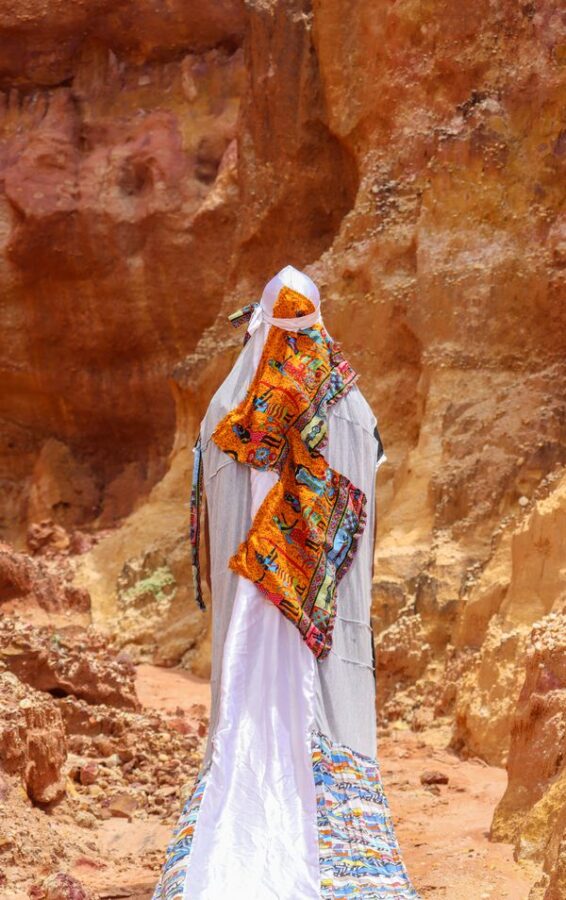
Lili, tells us about your five mothers in the short film…
Lili: When my biological parents passed away due to AIDS, my brother and I were legally adopted. My adoptive mother was the sister-in-law of my biological mother and also a close friend. Just before my mother passed away, she expressed the wish for this adoption to happen, trusting in their care and to prevent my brother and me from being separated—a process that I imagine was very painful for both of them. My adoptive mother worked tirelessly, alongside my adoptive father, to support the household, which now included five children. Consequently, my older sister took on a mothering role, taking care of the house, feeding us, giving baths, and playing with us while my mother focused on work. I grew up with a great deal of respect and affection for my sister, whom I affectionately started calling «irmãe» (a combination of sister and mother) over time.
In my adolescence, following my parents’ divorce, I lived with my maternal grandmother for a while, and we became very close. My grandmother taught me a lot about faith and care, standing by me during my grieving processes when several friends passed away. When I entered college, I moved from São Paulo to Rio Grande do Norte. I started attending a Candomblé terreiro and became a godchild of Mother Lúcia de Nanã, to whom I owe much of my life.
These are the mothers mentioned in the film: the mother who gave birth to me, nursed me, and loved me to the point of entrusting me to the care of my second mother who raised and saw me grow, my older sister, my maternal grandmother, and my mother in the spiritual realm. I feel incredibly blessed to be the child of these women.
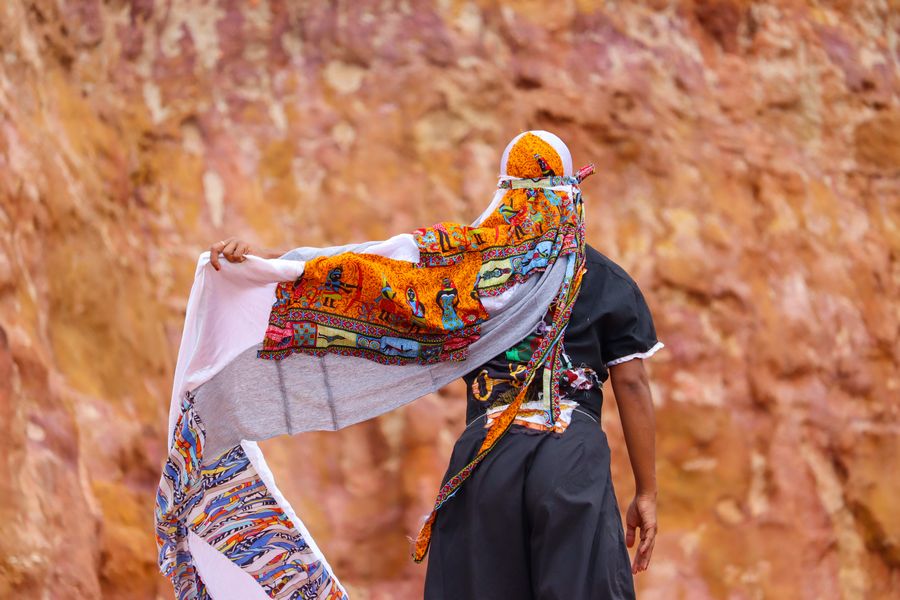
Hiura, you are the art director of the short film. To what extent does your powerful art direction embody a new aesthetic of liberation, a new kind of aesthetics? What role does spirituality play in the choice of colors, the sea, spaces, and movements? What is Kalunga?
Hiura: I built my entire artistic career working with the materials and tools available to me. Unfortunately, equipment and people for production are expensive and not always feasible investments.
However, thanks to my experience in the Brazilian Ballroom community, where I serve as the Overall Princess of the House of Baixa Costura (CBC), the first ballroom house in the state of Paraíba, which addresses issues of sustainable and conscious production of art and fashion, breaking with colonial imaginaries about artistic-cultural productions, I continue my productions despite the precariousness. This inspires me to empower people and produce works through Mobilegraphy, which are audiovisual images produced by smartphones.
This research is crucial to me because, beyond awards and publications that have personally rewarded me as an artist, it speaks to democratizing cultural production and creating our possibilities for making cinema and audiovisual content on a low budget and with a more diverse perspective on the reality we live in. It’s important to note that in «That Child with Aid$,» we also decided to use mobile devices for capturing images and audio in some scenes.
Regarding the art direction process, it was built based on discussions and references that Lili and I had from other artists and our experiences as Black people originating from terreiro communities; both of us are practitioners of Candomblé. All colors, costumes, and locations have signs related to the Orixás of Yoruba culture. That’s why almost all scenes are outdoors (by the river, at sea, on the rocks) and were thought in a way that the narrative text and images could call each other like the atabaques (instruments) that evoke our divinities in the form of harmonious music.
Kalunga is a word used by some African peoples and can have different attributes or translations. However, in our context and experience, Kalunga is related to a spiritual plane where our ancestors live. It means the «line of the world of the dead» and is symbolically attributed to the sea and the horizon that divides the visible from the invisible.
We cannot fail to highlight that the film’s team is predominantly composed of trans and Black individuals, contributing to the authenticity and sensitivity in the way the story is told.
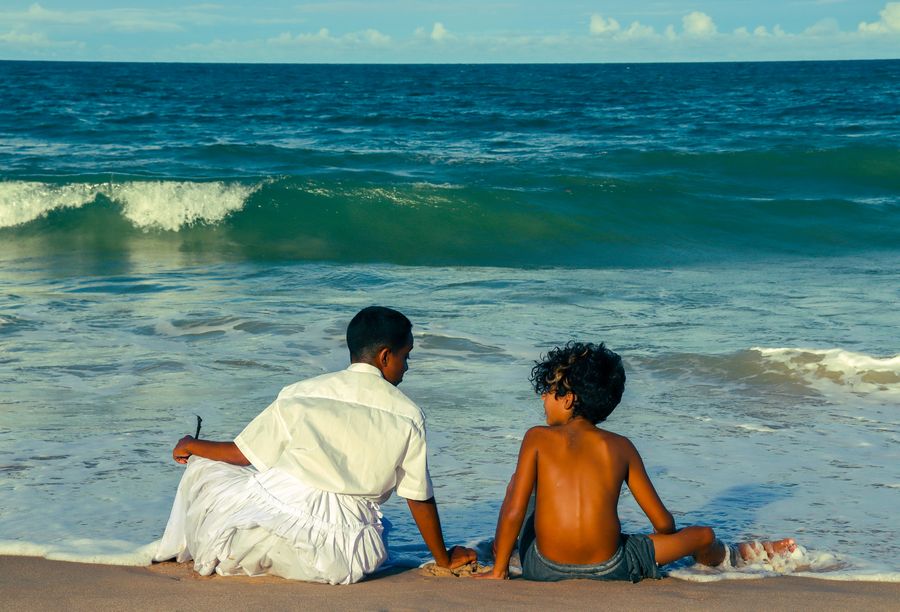
At the end of the short film, you dedicate it to «Black trans women who MATRIGESTATED the resistance to AIDS.» Can you tell us how this word «matrigestate» was born and the importance of this dedication for a community that historically faces stigmatization and discrimination?
Lili: Matrigestation is an African concept about the power of a management that acts on the motherhood agenda, meaning managing and caring for a future project based on affection.
In the 1980s, here in Brazil, the AIDS epidemic served as an «excuse» for the institutionalization of extermination projects against trans women, through the military police. Police operations like Operation Tarantula in São Paulo, associated with stigmatization and violence, persecuted and violated the human rights of people with AIDS, targeting trans women with arbitrary detentions, criminalization, and discrimination. In this context, trans women played a crucial role in confronting the stigma and discrimination against people with AIDS, organizing shelters, and denouncing police abuse.
Historically, trans women (especially Black trans women) have been heavily impacted by the AIDS epidemic, with high rates of infection and death, contributing to intensifying the historical process of marginalization and vulnerability of this population.
Dedicating the film to individuals like Neon Cunha, Carolina Iara, Brenda Lee, among many others, is a way of bringing to light this often-overlooked theme in HIV/AIDS discussions: The vital role of trans women in promoting social justice, defending human rights, and building a more effective movement for AIDS eradication.
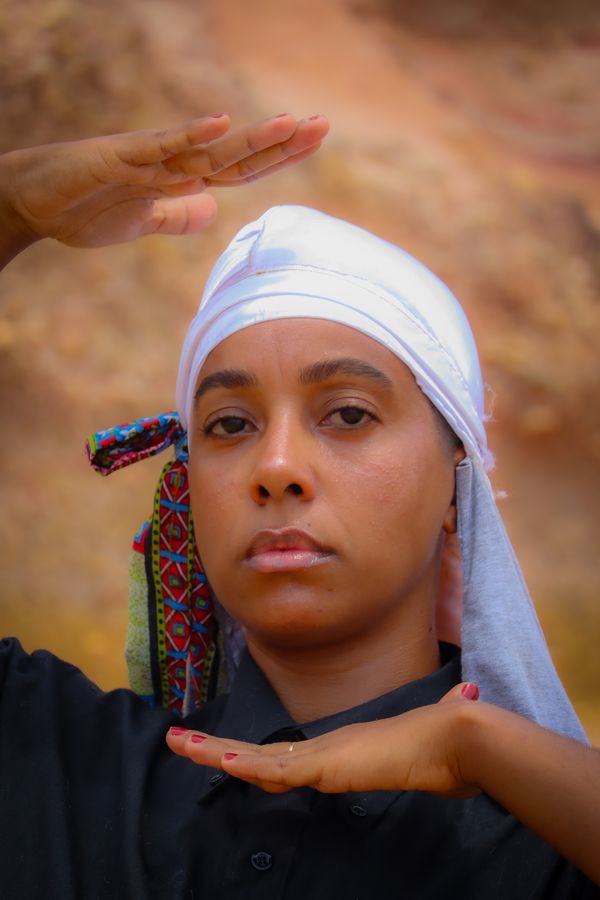
Do you want to continue collaborating on future projects? What is your biggest dream?
Lili and Hiura: Our relationship goes beyond work projects. Collaborating on research and productions is the result of a connection cultivated in siblinghood, respect, and complicity. We pinky promised that we wouldn’t die, and we’ve been advocating to the community for the possibility of a dignified life, healthy aging, the continuation of a story that breaks with narratives of panic, suffering, and misery. Our dream is the cure for AiD$, not only in the biological sense but especially in the destruction of this civilizational project that is underway, to emerge other possibilities of the future based on living well.
También te puede interesar
RECUENTOS. VIDEOS SOBRE LA MEMORIA SOCIAL E HISTÓRICA DE AMÉRICA LATINA
"Recuentos" es un proyecto comisariado por Isabela Villanueva para la galería Espacio Mínimo con obras en formato videográfico de Edgardo Aragón, Marilá Dardot, Claudia Joskowicz y Enrique Ramírez, artistas que buscan nuevas perspectivas para...
Yucef Merhi Nombrado Primer Curador de Colecciones Digitales del Wolfsonian–fiu
El venezolano Yucef Merhi (Caracas, 1977), artista pionero en el campo de los nuevos medios y diseñador interactivo, se unió a The Wolfsonian – Florida International University (Miami, Estados Unidos) como el primer curador...
CARTA ABIERTA. PABELLÓN DE CHILE EN LA 60ª BIENAL DE VENECIA
En respuesta a las controversias surgidas tras el reciente concurso para el Pabellón de Chile en la 60ª Bienal de Venecia, un grupo de firmantes constituido por mujeres reconocidas del ámbito artístico chileno e...

